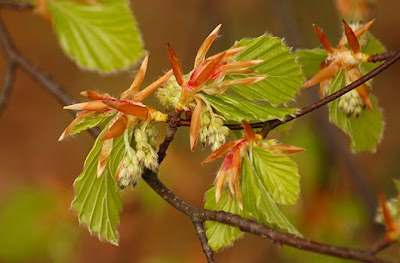This weekend we enjoyed an afternoon jaunt to Askham Bog near York, the weather was warm and cloudy with bursts of intermittent sunshine. During our first visit in September last year we were lucky enough to observe a Water Vole, today's highlight were two Brimstones (Gonepteryx rhamni), a first for me and I was chuffed to come away with a pic of one. My guess is that this one is a female which have more of a greenish yellow tinge than the males which are bright yellow.
To quote Richard South FES in his book The Butterflies of the British Isles “Probably this insect to which the name “butter-coloured fly” contracted into butterfly, was first given.” The Brimstone lays eggs on the developing leaves of buckthorn and alder, leaves the chrysalis at the end of July, hibernates in evergreen shrubs and trees, appears in February to May.
Throughout the walk we encountered six Peacocks (Nymphalis io) on the wing, the first looked very tatty, although the subsequent Peacocks looked a lot fresher. They all displayed a tendency to follow the wooden walkway, landing on the decked surface nearby to bask in the sunshine, very obliging thank you.
A little less obliging but more profuse 8 or so male Orange Tipped butterflies, ever on the go and deftly evading me at every pass.
This flowering grass was a common sight, and very striking, Citybirding helped me to identify it as Mountain Sedge (Carex montana).
The familiar hammering of a Great Spotted Woodpecker drew our attention to the treetops, and although too obscured for a decent pic we could at least identify it as a male by the distinctive red patch on the back of the head.

As I've said before I really struggle to identify warblers and only managed a dodgy pic of this one in flight.......blink and you'll miss it.

A carpet of Lesser Celandine attracted a host of insects and gave the dappled shade of the banks a springtime zing with its bright buttery yellow flowers.

















































